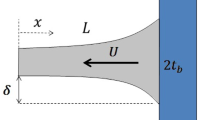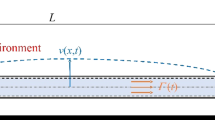Abstract
Only a limited number of free-stream flow properties can be measured in hypersonic impulse facilities at the nozzle exit. This poses challenges for experimenters when subsequently analysing experimental data obtained from these facilities. Typically in a reflected shock tunnel, a simple analysis that requires small amounts of computational resources is used to calculate quasi-steady gas properties. This simple analysis requires initial fill conditions and experimental measurements in analytical calculations of each major flow process, using forward coupling with minor corrections to include processes that are not directly modeled. However, this simplistic approach leads to an unknown level of discrepancy to the true flow properties. To explore the simple modelling techniques accuracy, this paper details the use of transient one and two-dimensional numerical simulations of a complete facility to obtain more refined free-stream flow properties from a free-piston reflected shock tunnel operating at low-enthalpy conditions. These calculations were verified by comparison to experimental data obtained from the facility. For the condition and facility investigated, the test conditions at nozzle exit produced with the simple modelling technique agree with the time and space averaged results from the complete facility calculations to within the accuracy of the experimental measurements.






Similar content being viewed by others
Abbreviations
- \(\alpha \) :
-
Property
- \(\bar{\alpha }\) :
-
Mean of given property
- \(\sigma \) :
-
Standard deviation
- \(t\) :
-
Temporal
- \(y\) :
-
Spatial in the radial direction
References
Krek, R.M., Jacobs, P.A: STN, Shock Tube and Nozzle Calculations for equibrilibrium air Report 2/93, Department of Mechanical Engineering. The University of Queensland, Australia (1997)
Lordi, J.A., Mates, R.E., Mosell, J.R.: Computer program for numerical solution of nonequilibrium expansion of reacting gas mixtures.NASA CR-472 (1966)
Chue, R.S., Eitelberg, G.: Studies of transient flows in high enthalpy shock tunnels. Exp. Fluids 25, 474–486 (1998)
Goozee, R.J., et al.: Simulation of a complete reflected shock tunnel showing a vortex mechanism for flow contamination. Shock Waves 15(3–4), 165–176 (2006)
Dann, A.G.: Shock wave/boundary layer interactions in hypersonic ducted flows. PhD Thesis. The University of Queensland, Australia (2009)
Jacobs, P.A.: Shock tube modeling with L1d. Report No. 13/98, Department of Mechanical Engineering. The University of Queensland, Australia (1998)
Jacobs, P.A.: MB_CNS: a computer program for the simulation of transient compressible flows. Report No. 10/96, Department of Mechanical Engineering The University of Queensland, Australia (1996)
Sharma, S.P., Wilson, G.J.: Computations of axisymmetric flows in hypersonic shock tubes. AIAA J. Thermophys. Heat Transf. 10(1), 169–176 (1996)
Jacobs, P.A., et al.: Eilmer’s Theory Book: Basic models for gas dynamics and thermochemistry. Report No. 09/2010, School of Mechanical and Mining Engineering. The University of Queensland, Australia (2010)
Acknowledgments
This work has been supported by the Australian Research Council. The authors would like to acknowledge the following contributions to this work: Wilson Chan, Rowan Gollan and Rainer Kirchhartz for tireless efforts in operating the computational facilities; Richard Morgan for both his guidance and support for both the experimental campaign and data analysis; Brian Loughrey and Keith Hitchcock for construction of experimental model and maintenance of the \(T^2\) facility.
Author information
Authors and Affiliations
Corresponding author
Additional information
Communicated by A. Sasoh and K. Kontis.
The paper was based on work that was presented at the 28th International Symposium on Shock Waves, 17–22 July, 2011, Manchester, UK.
Rights and permissions
About this article
Cite this article
McGilvray, M., Dann, A.G. & Jacobs, P.A. Modelling the complete operation of a free-piston shock tunnel for a low enthalpy condition. Shock Waves 23, 399–406 (2013). https://doi.org/10.1007/s00193-013-0437-8
Received:
Revised:
Accepted:
Published:
Issue Date:
DOI: https://doi.org/10.1007/s00193-013-0437-8




